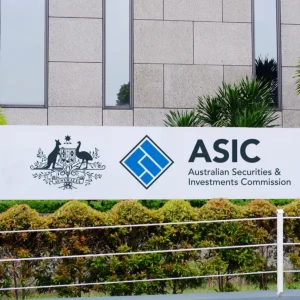
From the IoT data boom, to the rise of cloud and security concerns, the conference brought to Monaco around 1,500 experts from over 100 countries.
CBR list five main takeaways from the event.
Colos at risk of dying
Opening the first Global Leadership Roundtable of the event on June 7, Byrne Murphy, chairman at data centre colocater Digiplex, issued a staggering warning to those in the industry.
He said: "Innovate or die, and you cannot put too much pressure on the engineering side as well."
Murphy’s remarks came as the data centre space is being faced with new challenges, be it the need to be closer to customers or more hosting space.
However, this is also calling for new business models and a higher need to create new technologies (such as ones related to power, cooling and other components of the data centre) to answer the needs of a growing digital world.
We’re about to live on the edge
A key message across the main keynotes in the Central Theatre of the Grimaldi Forum was that edge data centres are about to boom just as the IoT moves from hype to reality.
Mark Bidinger, president of Schneider Electric’s cloud and service provider segment, was one of the first to bring the topic to the table saying that "the future edge is closer to us" as IoT fuels growth in data streams.
William Barney, CEO of Global Cloud Exchange, also said that the rise of IoT and growth of cloud services will bring with it the edge data centre, leading to the need for networked hubs.
The ‘dark web data centre’ is real (so is the ‘dark cloud’)
The threat landscape in the IT space has never been so big, but the IT landscape has also never been this big. One attracts the other. And now data centres are also being targeted by the dark web.
Presenting at the conference and also speaking to CBR, Cameron Brown, an independent cyber defence advisor who has also worked with the United Nations, the Australian Government and the Australian Police on forensics, said that the connection of the dark web to the data centre is real.
"With data centres, or cloud in particular, it is really not that different from how you would might go against physical infrastructure. You look at information, you try to transform that into a commodity which you can sell to people, and you want to do it secretively, so you do it via the dark web."
As Brown explained, the dark web is essentially a marketplace to trade information that would not be accepted in legitimate economy.
CBR asked about concrete examples of data centres being targeted via the dark web. Brown confirmed but due to confidentiality could not give any concrete examples, simply saying that is happening and that "there is data centre information available in the dark web".
"The security holes in the cloud, are probably bigger than the ones you would see in the conventional in-house enterprise architecture. Because it is moving so quickly, and it is expanding, that security is not necessarily built in at the get go. It is sort of an after-thought".
The key recommendation Brown has given is that there is a need for a shared responsibility model – trust verification, understand the SLAs, understand "where accountability stops with the provider, and where accountability stays with the user or the consumer".
It is also important that data centre operators understand why others would attack their business. "Organised criminals might be leveraging information to other third parties for example. [You need to] Build a profile of yourself, a psychological insight into what the attacker is or who they are."
Colocation industry looks into emerging markets
Just like the ‘edge hype’, the conference was flooded with talks around emerging markets. In or out of the presentation theatres, no one, including c-level executives, was indifferent to the business opportunities in markets like Africa and Asia particularly.
Global Cloud Exchange’s CEO Barney said that "emerging markets saw 1400% increase in internet use, and this is a hugely underserved market" as 75% of the world’s population lives here.
Eric Schwartz, Equinix EMEA president, also recognised that emerging markets are a desirable path for colos.
He said: "We have scratched the surface with data centres in china. We are looking at our opportunities in China to expand. There are opportunities in Latin America which we are also looking at."
Speaking to CBR, Schwartz also said the company is very focused in the Middle East region, especially in Dubai.
However, Barney also warned the hundreds attending his presentation that data centre strategies used in the US and the West "might not be the most efficient for countries in Asia, for instance".

Open source data centres: no turning back?
Over the last few months we have seen an uptake in open source projects in the data centre space. After all, this is an emerging segment worth billions of dollars. $50bn to be more precise.
And this trend was not left out at DCE 2016. Brice Martinot-Lagarde, global solution architect for cloud and service providers at Schneider Electric addressed the audience on the latest developments in the Open Compute Project (OCP) and data centre open source in general.
He said that IT and OT manufacturers are converging to specify a real end-to-end solution. This is enabled by the OCP. Lagarde also looked at the savings of using open source technology based on the OCP.
Overall, CAPEX savings can reach up to 45%. This includes 31% savings in redundancy differences, 8% savings from eliminating upstream UPS, and 12% savings from power supplies. Lagarde added in a 1% cost for the rack system and a 5% cost for Li-ion batteries, making the total CAPEX savings 45%.
In terms of power savings, a traditional 2N data centre would be paying on average $2.77 per watt. With OCP technology, a 2N data centre would see that cost lowered to $2.08/watt, about 25% less. If the open compute data centre is a 1N, this could lead to a 45% cost reduction, with a watt costing $1.53.
Future of Datacloud
With the third edition of the conference over, organiser BroadGroup have also started to look into next year’s schedule of events.
However, before the end of 2016, the industry will head north to Stockholm, Sweden, for Datacloud Nordic, set to be hosted on October 20.
Moving into next year, in January, the Finance and Investment Forum for Data Centre, Hosting and Cloud will be celebrating ten years in London.
The newest event to be added to the data centre agenda was announced in Monaco, and will be Datacloud Asia, the Asian version of the European gathering. The event will take place on February 23 in Capella, Singapore.
Lastly, Datacloud Europe 2017 will once again take place in Monaco, from June 6 to June 8.








